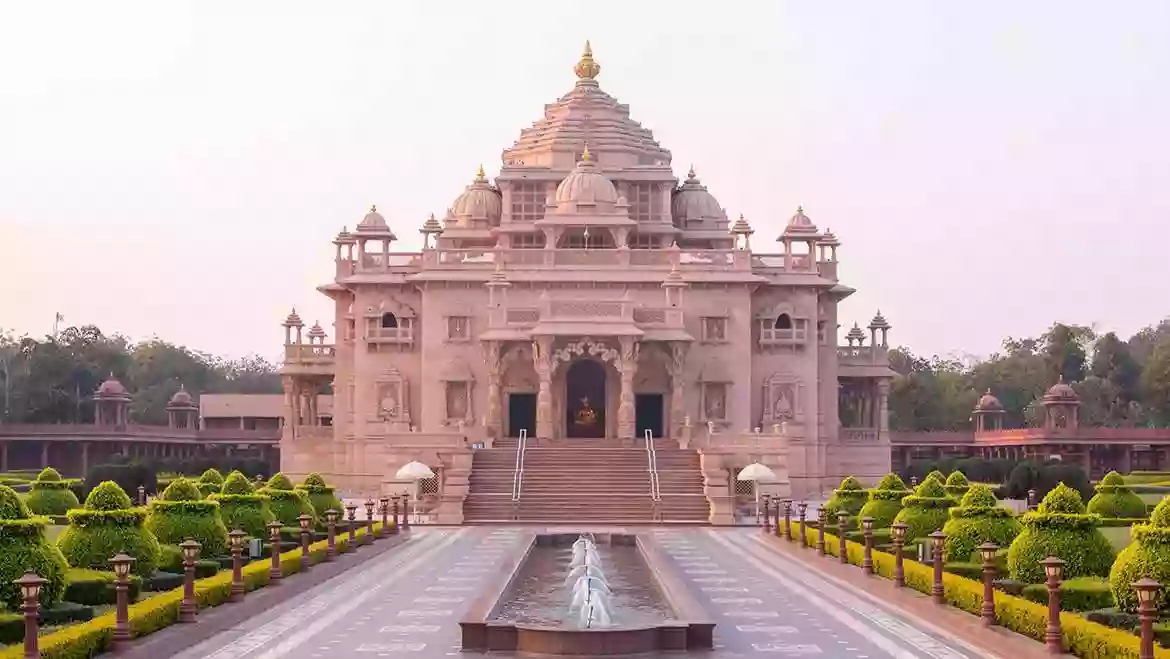In this comprehensive article, we delve into the deep-rooted meaning and cultural implications of the English word "temple." Through an in-depth exploration, we aim to shed light on the historical context, diverse interpretations, and religious connotations associated with this term. Join us as we unravel the rich tapestry of the word "temple" and its significance in different cultures and religions.
1. Origins and Etymology
The word "temple" finds its origins in the Latin word "templum," which refers to a sacred place dedicated to divine worship. Over time, this term has evolved to encompass a wide range of meanings, reflecting its usage in various contexts and cultures. Today, "temple" primarily signifies a place of religious significance, often serving as a sanctuary or dwelling for deities in numerous traditions across the globe.
2. Temples in Different Cultures
- 2.1. Ancient Egyptian Temples
Ancient Egypt boasted grand temples that were built to honor their pantheon of gods and goddesses. These awe-inspiring structures, such as the Temple of Karnak and the Temple of Luxor, reflected the Egyptians' deep spiritual beliefs and their devotion to their deities. The temple complexes were not merely places of worship but also served as centers for education, administration, and communal gatherings. The Egyptians believed that temples were the earthly abodes of their gods and goddesses, and they meticulously adorned these structures with intricate carvings, hieroglyphics, and statues.
- 2.2. Hindu Temples
Hindu temples hold immense significance in the religious and cultural fabric of India and other regions where Hinduism is practiced. These temples, often characterized by intricate architecture and elaborate rituals, serve as sacred spaces for devotees to connect with the divine. Each temple is dedicated to a specific deity and is designed to evoke a spiritual experience through its vibrant colors, sacred statues, and detailed carvings. Hindu temples are not only places of worship but also vibrant cultural hubs where various festivals, music, dance, and other art forms thrive. They serve as beacons of spirituality, fostering a sense of community and devotion among the followers of Hinduism.
- 2.3. Greek and Roman Temples
The ancient Greeks and Romans constructed temples as places of reverence for their respective gods and goddesses. These architectural marvels, such as the Parthenon in Athens and the Temple of Apollo in Rome, embodied the artistic and cultural achievements of these civilizations. The temples were not only religious sanctuaries but also showcased the architectural prowess of these ancient cultures. Greek temples were designed with meticulous attention to proportion and harmony, while Roman temples showcased their engineering expertise and incorporated grandeur into their structures. These temples served as focal points for religious ceremonies, civic gatherings, and cultural events.
- 2.4. Buddhist Temples
Buddhist temples, also known as pagodas or stupas, are sacred places of worship for followers of Buddhism. These temples vary in architectural styles and can be found in different parts of the world where Buddhism is practiced. Buddhist temples are designed to create a serene and peaceful environment, often situated in natural surroundings. The design and layout of Buddhist temples symbolize the Buddhist cosmology, with different levels representing various realms of existence. These temples serve as centers for meditation, spiritual retreats, and the study of Buddhist teachings.
- 2.5. Shinto Shrines
In Japan, Shinto shrines play a vital role in the religious and cultural traditions of the country. Shinto is the indigenous religion of Japan, and its followers visit shrines to pay respects to the kami, or the divine spirits believed to inhabit natural elements and ancestors. Shinto shrines are characterized by their distinctive architecture, featuring torii gates, stone lanterns, and sacred purification fountains. These shrines serve as spaces for worship, purification rituals, and celebrations of seasonal festivals.
3. Symbolism and Spiritual Significance
Temples often embody symbolic elements that represent various aspects of religious belief and spiritual practices. They serve as gateways between the mortal and the divine, acting as conduits for communication, worship, and introspection. Temples are revered as sacred spaces where individuals seek solace, offer prayers, and engage in rituals to connect with the divine presence.
- 3.1. Sacred Geometry and Design
The architecture of temples often follows sacred geometry principles, incorporating precise measurements and proportions. These design elements aim to create harmony and balance, mirroring the cosmic order and reflecting the belief in a divine plan. The layout and arrangement of temple structures, including the placement of statues, altars, and sacred objects, are carefully designed to enhance the spiritual experience of visitors.
- 3.2. Rituals and Ceremonies
Temples are centers for religious rituals and ceremonies, which vary depending on the specific traditions and beliefs associated with each temple. These rituals often involve chants, prayers, offerings, and symbolic gestures performed by priests or devotees. Through these practices, individuals seek spiritual purification, blessings, and a deeper connection with the divine.
- 3.3. Pilgrimage and Spiritual Journeys
Temples hold great significance as destinations for pilgrimages and spiritual journeys. Pilgrims travel to these sacred sites to seek spiritual growth, enlightenment, or to fulfill a religious vow. The act of embarking on a pilgrimage is considered a profound spiritual undertaking, offering devotees an opportunity for introspection, reflection, and a deeper connection with their faith.
4. Cultural and Social Impact
- 4.1. Architectural Marvels
Temples have left an indelible mark on the architectural landscape throughout history. The intricate craftsmanship, unique design elements, and meticulous attention to detail showcased in these structures have inspired architects and artists for centuries. The grandeur of temples continues to captivate visitors, highlighting the remarkable achievements of ancient civilizations. Many contemporary architectural styles draw inspiration from the architectural features found in temples.
- 4.2. Tourist Attractions
Many ancient temples have evolved into popular tourist destinations, drawing visitors from around the world. The cultural and historical significance of these temples, coupled with their architectural splendor, make them compelling sites to explore and learn about the rich heritage of different civilizations. Tourism around temples often contributes to the local economy, supporting businesses such as hotels, restaurants, and souvenir shops.
- 4.3. Preservation of Cultural Heritage
Temples serve as guardians of cultural heritage, preserving ancient traditions, rituals, and artistic expressions. They offer insights into the religious beliefs, social structures, and daily lives of past civilizations. Efforts are made to protect and conserve these temples to ensure their longevity, allowing future generations to experience and appreciate the cultural legacy they represent.
5. Temples in Modern Times
- 5.1. Spiritual Centers and Community Hubs
Temples continue to play a vital role as spiritual centers and community hubs in contemporary society. They provide spaces for religious worship, spiritual guidance, and communal gatherings. Temples often organize events, classes, and cultural activities to engage the community, fostering a sense of belonging and promoting cultural exchange.
- 5.2. Interfaith Dialogue and Understanding
In an increasingly interconnected world, temples have become platforms for interfaith dialogue, promoting understanding, tolerance, and cooperation among different religious communities. Interfaith initiatives and events held at temples encourage dialogue, shared experiences, and the celebration of diversity, contributing to social harmony and peaceful coexistence.
The Enduring Significance and Cultural Impact of Temples
The English word "temple" encompasses a vast array of historical, cultural, and spiritual significance. From ancient Egyptian and Greek temples to Hindu sanctuaries, Buddhist pagodas, and Shinto shrines, these structures have played pivotal roles in shaping human civilizations and providing spaces for divine connection. The enduring appeal of temples lies in their ability to inspire awe, foster a sense of peace, and preserve the cultural heritage of societies across the globe.



